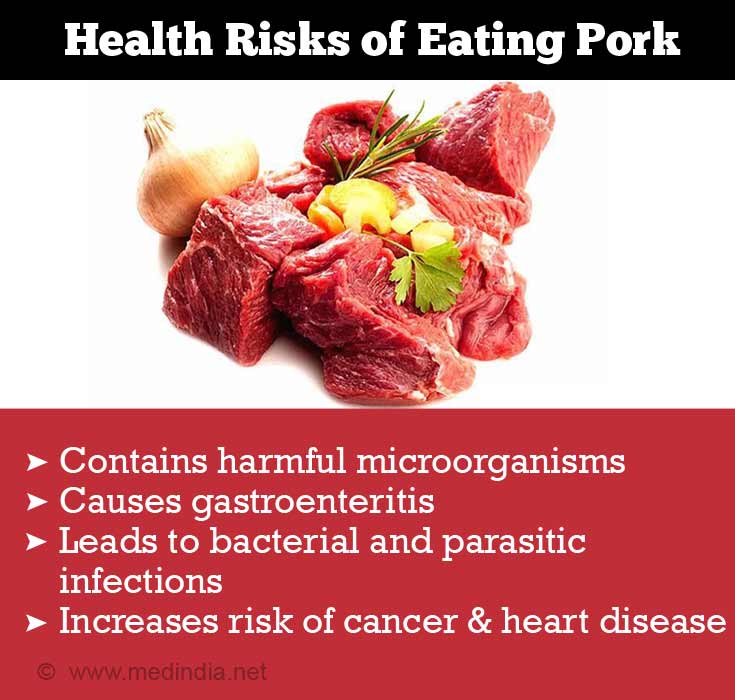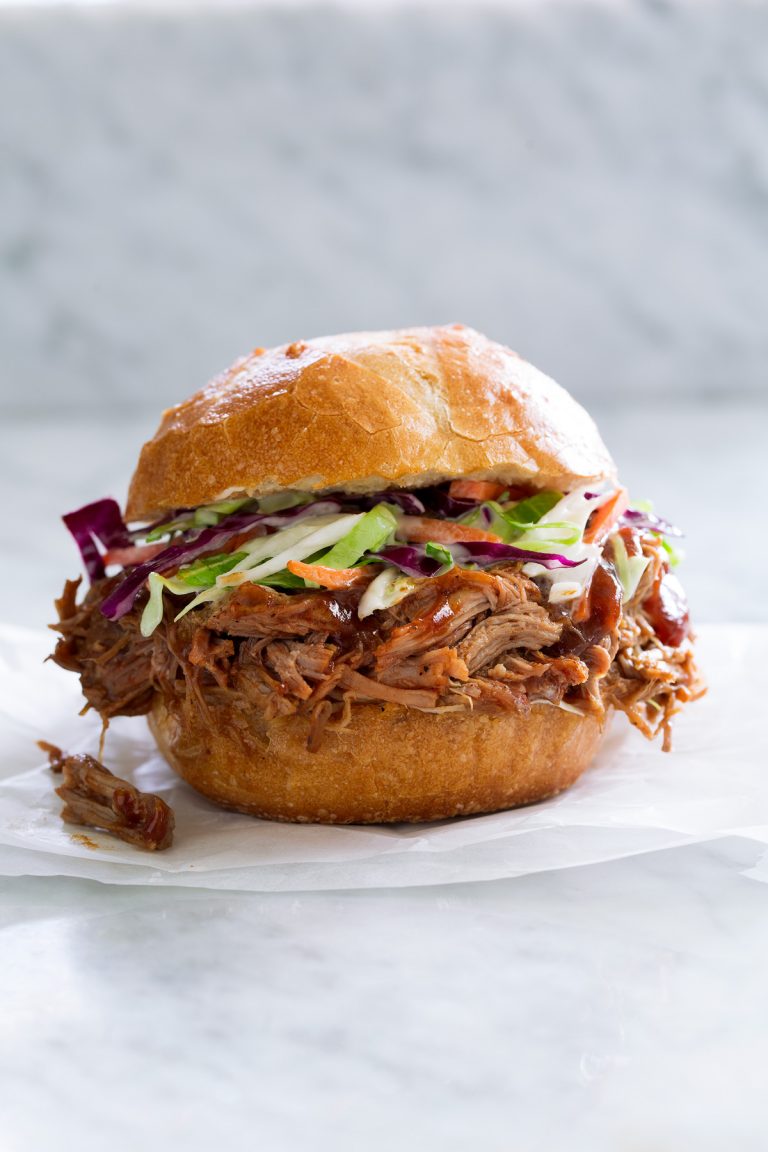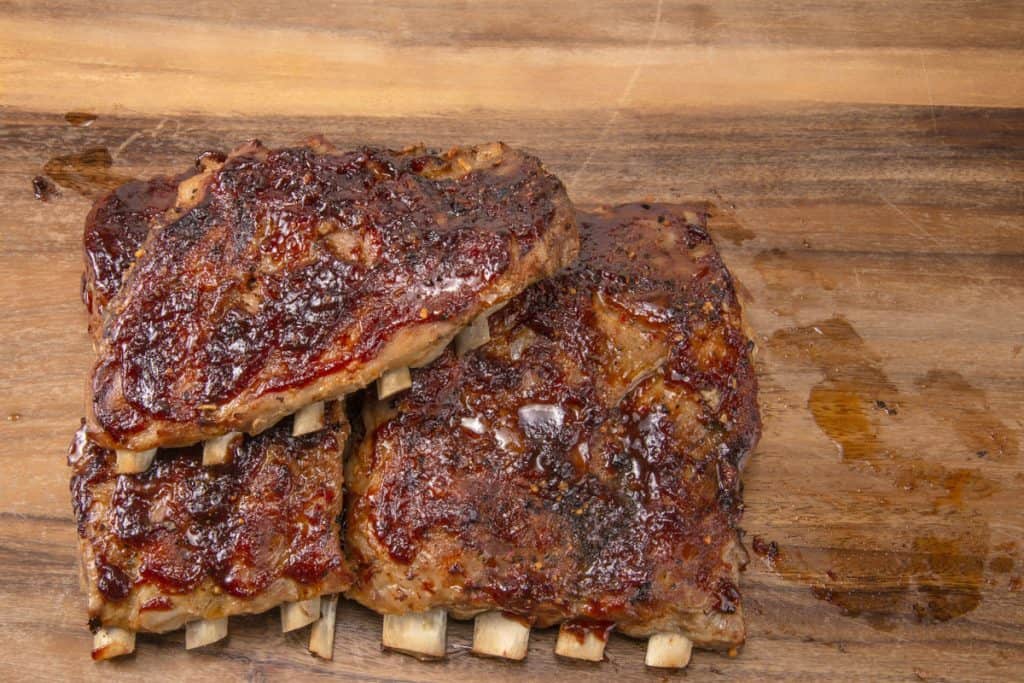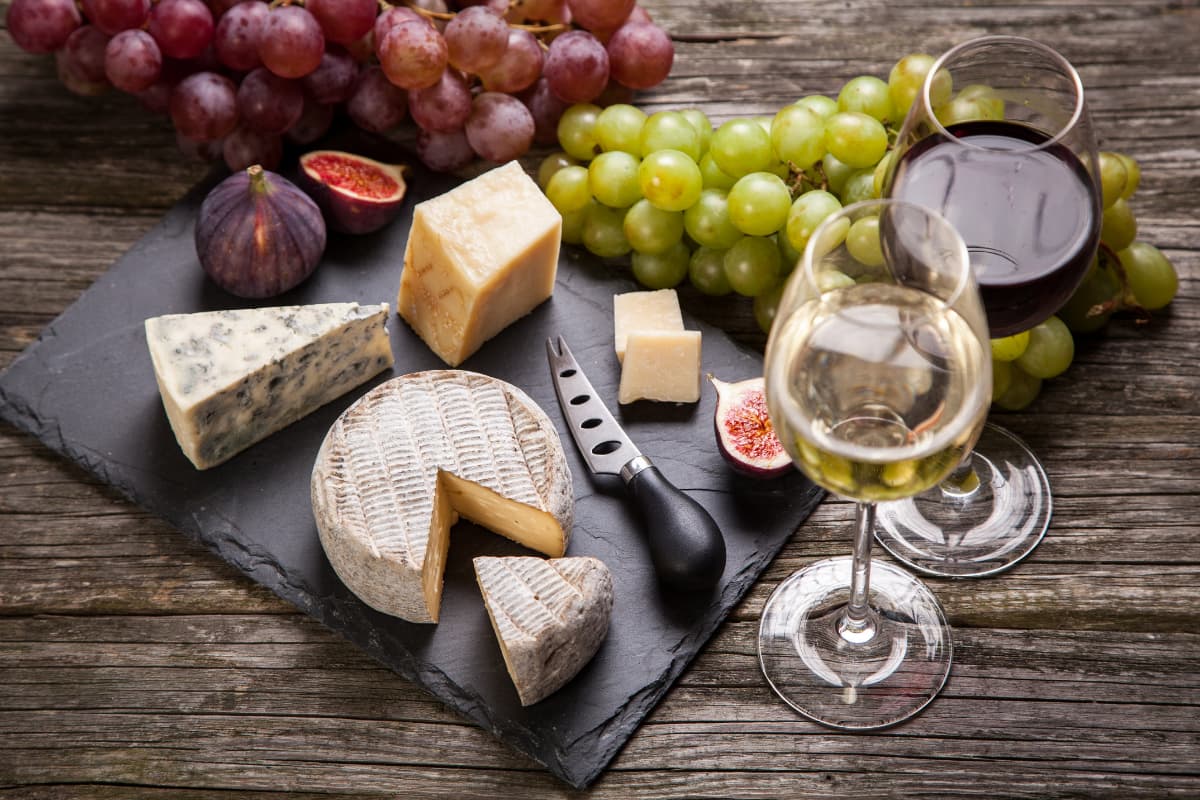With pregnancy comes a slew of dietary considerations, and many expectant mothers are wondering whether pork ribs are safe to eat during this special time. How healthy will a growing baby be for eating pork ribs? Yes, but with...
With pregnancy comes a slew of dietary considerations, and many expectant mothers are wondering whether pork ribs are safe to eat during this special time. How healthy will a growing baby be for eating pork ribs?
Yes, but with some conditions. To learn about the nutritional value of pork ribs, as well as potential risks, as well as safe consumption during pregnancy, we’ll go over some expert-backed tips. You’ve come to the right place if you’re looking for answers to the best cooking methods for both flavor and safety. During pregnancy, we’ll look at pork ribs in depth to provide you with the information you need to make informed decisions.
With our informative journey, you will learn not only what you need to know about your health-related questions, but also how to best prepare alternative protein sources, cook with confidence, and implement expert nutritional advice. Let’s take a look at the delicious world of pork ribs during pregnancy, ensuring that you enjoy every bite as much as possible with confidence.
Nutritional Value of Pork Ribs

Image by – ciaprochef.com
In dissecting the culinary landscape for expectant mothers, a keen focus on the nutritional terrain of pork ribs becomes imperative. These succulent cuts are not merely a gustatory delight but also harbor a spectrum of essential nutrients pivotal for maternal well-being.
Essential Nutrient Breakdown
Pork ribs emerge as a formidable source of protein, a cornerstone in the creation of new cells and tissues during pregnancy. The protein content in these savory cuts not only satiates the taste buds but also aligns seamlessly with the increased protein requirements for supporting the developing fetus. Moreover, the richness of vitamins B6 and B12 contributes to the overall energy metabolism, ensuring that the physiological demands of pregnancy are adequately met.
Heralding Healthy Fats
While the notion of ‘fats’ often triggers caution, the monounsaturated and polyunsaturated fats found in pork ribs play a pivotal role in fetal brain development. These healthy fats, accompanied by a judicious amount of cholesterol, contribute to the formation of the baby’s nervous system, underscoring the nuanced balance required for optimal growth.
Mineral Wealth
Pork ribs boast an impressive mineral profile, notably featuring iron and zinc. Iron, a vital component in red blood cells, mitigates the risk of anemia during pregnancy. Concurrently, zinc facilitates immune system function and aids in the synthesis of DNA, pivotal for the rapid cell division transpiring within the womb.
A Nutritional Yardstick
In juxtaposing the nutritional bounty of pork ribs with the recommended daily intake for pregnant women, a comprehensive evaluation is indispensable.
Protein Parity
With protein occupying a paramount role in fetal development, the protein content in pork ribs aligns harmoniously with the daily requirements stipulated for pregnant women. This culinary choice not only satiates the palate but also addresses the increased protein demands during this transformative period.
Micronutrient Harmony
The amalgamation of vitamins, especially B6 and B12, parallels the recommended daily intake, fortifying the expectant mother with the necessary nutrients for sustained energy levels and overall vitality. The mineral composition further contributes to maintaining the delicate equilibrium required for a healthy pregnancy.
Navigating Nutritional Choices
In steering the culinary course during pregnancy, the consumption of pork ribs emerges not only as a palatable option but as a nuanced choice rooted in nutritional wisdom. As the expectant journey unfolds, the judicious inclusion of pork ribs can be viewed not just as a gastronomic indulgence but as a deliberate step towards meeting the multifaceted nutritional demands of this transformative period.
In this gastronomic expedition, where every bite holds nutritional significance, the nutritional richness of pork ribs stands as a testament to the intricate dance between flavor and sustenance. As expectant mothers navigate the diverse terrain of dietary choices, the inclusion of pork ribs becomes a savory rendezvous with essential nutrients, offering a delectable journey through the realms of gastronomy and nutrition alike.
Potential Risks Associated with Pork Ribs

Image source: https://medindia.net
Navigating the culinary landscape during pregnancy necessitates a discerning eye, and a nuanced understanding of potential risks associated with specific food choices becomes imperative. As we unravel the realm of pork ribs, it’s paramount to acknowledge and scrutinize the lurking threats that may compromise the well-being of both the expectant mother and her unborn child.
Bacterial Contamination Risks
The allure of pork ribs is undeniable, but the specter of bacterial contamination, particularly from Listeria and Salmonella, demands our attention. These microscopic foes can stealthily infiltrate raw or undercooked pork ribs, posing a serious threat to the health of a pregnant woman and her developing fetus. The consequences of these bacteria extend beyond mere gastrointestinal discomfort; they can precipitate severe complications, including miscarriage or preterm birth.
Sodium Content and its Impact on Pregnancy
While the savory taste of pork ribs often hinges on the savory interplay of spices and seasonings, the sodium content inherent in these flavor enhancers merits scrutiny, especially during pregnancy. Elevated sodium levels can contribute to hypertension, a condition that, when unmanaged, may lead to preeclampsia—a potentially life-threatening complication for both mother and baby. Balancing the desire for culinary pleasure with a conscientious approach to sodium intake becomes paramount for a healthy gestational journey.
Consideration of Additives and Preservatives
The modern culinary landscape often sees the incorporation of various additives and preservatives to enhance flavor, appearance, and shelf life. In the case of pork ribs, a closer inspection of these additional components is essential. Nitrites and nitrates, commonly used in curing processes, have been associated with adverse pregnancy outcomes. Striking a delicate balance between relishing the delectable flavors of pork ribs and steering clear of potentially harmful additives requires a judicious approach.
In the quest for culinary delights, it’s crucial to acknowledge that the pitfalls lie not only in the raw material but also in the preparation methods and accompanying elements. While indulging in pork ribs can be a gustatory pleasure, mitigating these risks demands a holistic understanding of the potential hazards and a strategic approach to minimize them.
Navigating the Gastronomic Terrain
As expectant mothers navigate the gastronomic terrain, a mindful consideration of these risks underscores the importance of informed decision-making. Opting for thoroughly cooked pork ribs, avoiding excessive sodium-laden seasonings, and opting for additive-free preparations can transform this culinary journey into a safe and enjoyable experience. The nuanced interplay between flavor and safety becomes a delicate dance, one that, when executed with precision, ensures a gastronomic adventure that complements the joyous journey of pregnancy.
In the realm of pregnancy nutrition, awareness is the compass guiding expectant mothers through the myriad choices laid before them. The saga of pork ribs, with its tantalizing flavors and potential pitfalls, serves as a microcosm of this culinary odyssey. By dissecting and understanding the risks embedded in these succulent cuts, pregnant women can savor the experience without compromising the health and vitality of themselves and their unborn child.
Cooking and Preparation Methods
Embarking on the culinary journey of preparing pork ribs during pregnancy requires not just a keen palate but also a nuanced understanding of the cooking and preparation methods that ensure both flavor and safety are harmoniously preserved.
The Crucial Embrace of Thorough Cooking
At the cornerstone of safe pork rib consumption lies the imperative embrace of thorough cooking. The heat, penetrating through the layers of meat, becomes a culinary safeguard, annihilating potential bacterial threats and rendering the dish not just delectable but also safe for expectant mothers. The culinary alchemy that transpires within the confines of heat transforms pork ribs from raw potential hazards to a gastronomic delight.
Grilling, Roasting, or Smoking: The Culinary Crossroads
In the realm of cooking pork ribs, the method of preparation becomes a pivotal decision point. Grilling, roasting, and smoking emerge as three culinary crossroads, each laden with its own set of pros and cons.
Grilling
Pros: Grilling imparts a smoky flavor, enhancing the overall gustatory experience. It also allows for the rendering of fat, resulting in a slightly leaner dish. Cons: The direct exposure to flames may lead to uneven cooking, demanding vigilant attention to prevent charring. Additionally, the formation of potentially harmful compounds like heterocyclic amines (HCAs) can occur.Roasting
Pros: Roasting in an oven provides a controlled environment, ensuring more even cooking. This method also allows for the incorporation of flavorful marinades without the risk of flare-ups. Cons: While roasting minimizes the risk of harmful compounds compared to grilling, it may not impart the same smoky flavor. Careful monitoring is still required to prevent overcooking.Smoking
Pros: Smoking introduces a distinctive smokiness to the pork ribs, creating a sensory experience that resonates with many. The slow-cooking process can result in tender, flavorful meat. Cons: The extended cooking time in smoking may elevate the risk of bacterial contamination if not meticulously monitored. Additionally, the potential formation of polycyclic aromatic hydrocarbons (PAHs) is a consideration.Limiting Exposure to Harmful Substances
Beyond the cooking methods, a conscientious effort to limit exposure to harmful substances during the preparation phase is crucial. Choosing natural wood chips for smoking, avoiding excessive charring during grilling, and opting for quality, additive-free marinades all contribute to a safer culinary endeavor. The mantra becomes not just the mastery of cooking techniques but an overall mindfulness that transcends the kitchen, ensuring that every step in the preparation is a stride towards a safe and delightful gastronomic experience.
In the intricate dance between flavors and safety, the importance of thorough cooking cannot be overstated. Whether opting for the smoky allure of grilling, the controlled environment of roasting, or the slow embrace of smoking, each method unfolds a unique chapter in the culinary narrative. As expectant mothers navigate the gastronomic nuances of pork rib preparation, the kitchen becomes a realm where both the palate and safety are elevated to a harmonious crescendo.
Expert Opinions and Guidelines
In navigating the nuanced landscape of pork rib consumption during pregnancy, insights from healthcare professionals and the guidelines they offer become a beacon for expectant mothers seeking clarity amid a sea of culinary choices.
Insights from Healthcare Professionals:
Healthcare professionals, with their wealth of knowledge and experience, play a pivotal role in shaping dietary recommendations for expectant mothers. Their insights on pork rib consumption provide a compass for pregnant women looking to strike a balance between nutritional needs and safety.
Temperature Thresholds: Healthcare professionals often emphasize the critical importance of ensuring pork ribs reach a safe internal temperature during cooking, eliminating the risk of bacterial contamination. This nugget of wisdom becomes a cornerstone in the kitchen for expectant mothers. Protein Considerations: While pork ribs can be a source of essential nutrients, healthcare professionals may stress the need for diversification in protein sources, ensuring a well-rounded and balanced diet throughout pregnancy.Recommendations from Nutritionists Regarding Portion Control:
Nutritionists, armed with a deep understanding of dietary requirements, provide nuanced recommendations regarding portion control—a facet often overlooked in the indulgence of flavorful pork ribs.
Balancing Nutrient Intake: Nutritionists may advocate for a mindful approach to portion sizes, aligning them with the broader dietary needs of pregnant women. This not only ensures satiety but also helps in preventing overconsumption of specific nutrients, such as sodium and fats. Supplementing with Alternatives: Nutritionists might suggest incorporating alternative protein sources to complement the benefits of pork ribs, enhancing the nutritional diversity of the overall diet. This strategic balance allows for a more comprehensive approach to meeting nutritional requirements.Addressing Specific Concerns Raised by Medical Experts:
Specific concerns raised by medical experts serve as cautionary guideposts, steering expectant mothers away from potential pitfalls associated with pork rib consumption during pregnancy.
Sodium Sensitivity: Medical experts may highlight the impact of sodium content in pork ribs, especially for pregnant women with preexisting conditions such as hypertension. This targeted advice ensures that dietary choices align with individual health profiles. Allergen Considerations: For those with known allergens or sensitivities, medical experts might recommend thorough allergen screening in pork rib preparations. This tailored guidance helps preempt any adverse reactions and fosters a safe culinary experience.In the labyrinth of dietary decisions, the collective wisdom of healthcare professionals, nutritionists, and medical experts converges to provide pregnant women with a roadmap for safe and nutritious pork rib consumption. As the kitchen transforms into a space where culinary aspirations meet medical considerations, the collaborative guidance from these experts becomes an invaluable resource. Expectant mothers, armed with these insights, can savor the culinary journey, confident that each flavorful bite aligns seamlessly with the overarching goal of a healthy and joyous pregnancy.
Alternatives to Pork Ribs
As the culinary canvas unfolds during pregnancy, exploring alternatives to pork ribs emerges as a strategic pursuit, offering a diverse array of pregnancy-friendly protein sources. In the quest for a well-rounded and nutritionally robust diet, the spotlight shifts to alternative meat options, each bringing its unique set of benefits to the gastronomic table.
Identifying Pregnancy-Friendly Protein Sources:
Diversifying protein intake is not just a culinary strategy but a nutritional imperative during pregnancy. Identifying pregnancy-friendly protein sources involves a thoughtful exploration of alternatives that balance taste, nutritional density, and safety.
Poultry Marvels:
Chicken and Turkey: Lean cuts of chicken and turkey stand out as stellar protein sources. Rich in essential nutrients like iron and zinc, they contribute to fetal development without the heightened fat content associated with some pork cuts.Seafood Sensations:
Salmon and Trout: Laden with omega-3 fatty acids, salmon and trout not only offer a protein boost but also contribute to fetal brain development. The low mercury content in these fish makes them a safe and nutritious choice for expectant mothers.Plant-Powered Proteins:
Legumes and Beans: Chickpeas, lentils, and various beans become protagonists in plant-powered protein alternatives. Packed with fiber, iron, and folate, these options cater to nutritional requirements while offering a departure from animal-based proteins.Nutritional Benefits of Alternative Meat Options:
The transition to alternative meat options extends beyond mere substitution; it opens the door to a spectrum of nutritional benefits that cater to the intricate demands of pregnancy.
Lean Cuts for Lean Gains:
Opting for lean cuts of meat, such as skinless poultry or lean beef, reduces saturated fat intake while ensuring a protein-packed punch. This becomes pivotal in maintaining a healthy balance between macronutrients, a consideration that resonates throughout pregnancy.Omega-3 Enriched Choices:
Seafood alternatives, particularly those rich in omega-3 fatty acids, contribute to the development of the baby’s nervous system. This nutritional boon, coupled with the avoidance of high-mercury options, positions alternative seafood as a savory and safe protein avenue.Vegetarian and Vegan Vistas:
Embracing vegetarian or vegan protein sources broadens the nutritional palette. Beyond the protein bounty, these alternatives bring forth an array of vitamins, minerals, and antioxidants that foster overall health and well-being during pregnancy.In this culinary exploration of alternatives to pork ribs, the emphasis is not just on substitution but on a strategic curation of protein sources that align with the dynamic needs of pregnancy. Poultry, seafood, and plant-powered options emerge as protagonists in a gastronomic narrative that transcends flavor, encompassing a symphony of nutrients crucial for the expectant mother and her developing child. As the kitchen transforms into a realm of culinary creativity and nutritional precision, these alternatives become not just choices but ingredients in a recipe for a wholesome and vibrant pregnancy journey.
Personal Experiences and Anecdotes
In the culinary odyssey of pregnancy, the inclusion or avoidance of pork ribs takes on a deeply personal dimension, as echoed through the diverse tapestry of real-life stories and anecdotes from pregnant individuals. These narratives, a mosaic of experiences and perspectives, illuminate the nuanced choices pregnant women navigate in the realm of culinary delights.
Compilation of Real-Life Stories from Pregnant Individuals:
The real-life stories from expectant mothers offer a glimpse into the multifaceted decision-making process surrounding pork rib consumption during pregnancy. These anecdotes, teeming with authenticity, reflect the kaleidoscope of experiences that shape the culinary journey of each pregnant individual.
Culinary Indulgence and Caution:
Some mothers share tales of savoring the succulence of pork ribs, emphasizing the importance of balance and moderation. Their stories underscore that culinary pleasures need not be sacrificed entirely, advocating for a thoughtful and measured approach.Navigating Cravings and Concerns:
Others recount moments of bypassing pork ribs, driven by concerns about bacterial contamination or specific dietary restrictions. Their narratives highlight the conscientious decisions made to prioritize safety and well-being, showcasing the intricate dance between cravings and caution.Diverse Perspectives on Including or Avoiding Pork Ribs:
The diverse perspectives on pork rib consumption during pregnancy encapsulate a spectrum of considerations, from cultural influences to nutritional priorities. Each narrative adds a layer to the collective wisdom that pregnant women draw upon as they navigate the gastronomic landscape.
Cultural Traditions and Culinary Heritage:
Some individuals share how cultural traditions and culinary heritage play a pivotal role in shaping their choices. For those whose cultural tapestry intertwines with the aroma of pork ribs, the decision to include or abstain becomes an intricate negotiation between tradition and health.Nutritional Pragmatism:
Pregnant women, driven by a pragmatic lens, narrate stories of opting for alternative protein sources, showcasing a commitment to meeting nutritional needs without compromising safety. These stories become beacons of inspiration for others seeking a harmonious balance between taste and health.Anecdotes as Guideposts in the Culinary Journey:
As these anecdotes intertwine, they form guideposts for expectant mothers embarking on their culinary journey during pregnancy. The collective wisdom embedded in these narratives serves as a compass, offering insights, considerations, and a sense of camaraderie to those traversing similar paths.
In this realm where individual stories converge, the decision to include or avoid pork ribs becomes more than a dietary choice; it transforms into a narrative of resilience, mindfulness, and self-care. Each story, a testament to the unique journey of pregnancy, contributes to the broader conversation around safe and satisfying culinary choices. As expectant mothers glean insights from these personal narratives, the kitchen becomes not just a space for culinary creation but a canvas for storytelling, where every ingredient, every choice, adds a brushstroke to the masterpiece of a memorable and nourishing pregnancy journey.
More questions
1. Are pork ribs safe to eat during pregnancy?Yes, pork ribs can be safely consumed during pregnancy when cooked thoroughly. Ensuring that pork reaches a safe internal temperature, typically 145°F (63°C), minimizes the risk of harmful bacteria like Listeria or Salmonella. It’s advisable to opt for lean cuts and avoid excessive use of high-sodium seasonings. Pregnant individuals should also consider individual health factors and consult healthcare professionals for personalized advice. Diverse protein sources, including alternatives, can be integrated for a balanced diet, catering to both nutritional needs and safety during this crucial period.
11. What are the symptoms of foodborne illnesses related to undercooked pork, and how do they affect pregnancy?Consuming undercooked pork during pregnancy can pose risks of foodborne illnesses, such as Salmonella or Toxoplasma infection. Symptoms include nausea, vomiting, abdominal cramps, diarrhea, and fever. In severe cases, complications may arise, affecting both the mother and the unborn child. During pregnancy, the immune system undergoes changes, making individuals more susceptible to infections. Foodborne illnesses can lead to dehydration and nutrient deficiencies, potentially impacting fetal development. Pregnant individuals experiencing symptoms or suspecting undercooked pork consumption should seek prompt medical attention. Prevention involves thorough cooking, reaching safe internal temperatures, and practicing good food hygiene to mitigate the risk of foodborne illnesses during this critical period.
"@type": "Question", "name": 1. Are pork ribs safe to eat during pregnancy?, "acceptedAnswer": { "@type": "Answer", "text": "
Yes, pork ribs can be safely consumed during pregnancy when cooked thoroughly. Ensuring that pork reaches a safe internal temperature, typically 145°F (63°C), minimizes the risk of harmful bacteria like Listeria or Salmonella. It's advisable to opt for lean cuts and avoid excessive use of high-sodium seasonings. Pregnant individuals should also consider individual health factors and consult healthcare professionals for personalized advice. Diverse protein sources, including alternatives, can be integrated for a balanced diet, catering to both nutritional needs and safety during this crucial period.
" } , "@type": "Question", "name": 11. What are the symptoms of foodborne illnesses related to undercooked pork, and how do they affect pregnancy?, "acceptedAnswer": { "@type": "Answer", "text": "
Consuming undercooked pork during pregnancy can pose risks of foodborne illnesses, such as Salmonella or Toxoplasma infection. Symptoms include nausea, vomiting, abdominal cramps, diarrhea, and fever. In severe cases, complications may arise, affecting both the mother and the unborn child. During pregnancy, the immune system undergoes changes, making individuals more susceptible to infections. Foodborne illnesses can lead to dehydration and nutrient deficiencies, potentially impacting fetal development. Pregnant individuals experiencing symptoms or suspecting undercooked pork consumption should seek prompt medical attention. Prevention involves thorough cooking, reaching safe internal temperatures, and practicing good food hygiene to mitigate the risk of foodborne illnesses during this critical period.
" }
] }
In conclusion
Balancing is essential for a pregnant woman, and we explored the safety of indulgeing in pork ribs during pregnancy throughout our exploration. Nonetheless, they should be watched closely at all times. Making sure that the food is thoroughly cooked is required to remove any bacteria that may have become present, such as Listeria and Salmonella. Furthermore, pork ribs should be moderate in terms of sodium content and additives because they are part of a well-balanced diet during pregnancy.
The opinions of experts strongly encourage moderation and careful consideration in order to provide personalized medical advice, reinforcing the importance of consulting with healthcare providers. The anecdotal experiences shared by pregnant women provide a diverse perspective on the biological factors that influence body responses to various food types.
As we bid farewell to this culinary journey, keep in mind that adding pork ribs to your pregnancy diet is a personal decision. You can get a head start on your culinary journey if you have the necessary knowledge, consider alternatives, and heed expert advice. Every bite of food contributes positively to the well-being of both you and your child as you navigate pregnancy, and you make educated decisions in order to provide your child with the best possible experience.
As you embark on your delightful journey as a mother, it may be worthwhile to consider your options in the kitchen as well. You’re in luck because we’re sharing the moments one bite at a time.















